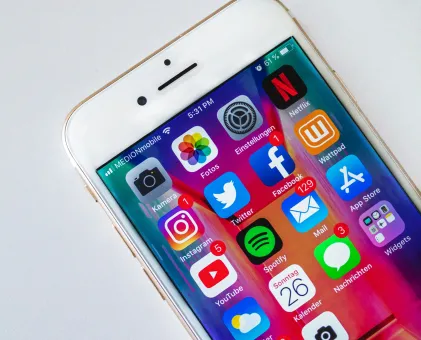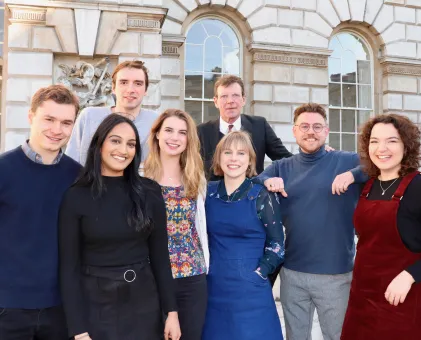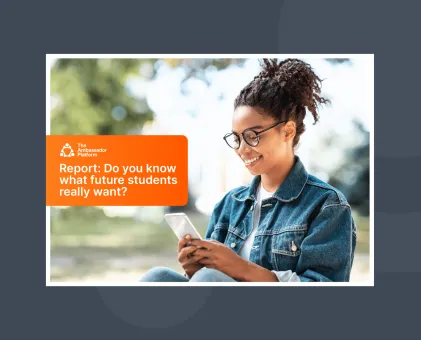Recruitment is dead, long live (digital) recruitment

Australian borders are re-opening to international students, alleluya! So this is it, the pandemic has come and gone, and, all of a sudden, it’s 2019 again. Here’s to a wonderful Semester 1 2022, when thousands of offshore students will flock Down Under. In a moment all the pain, restrictions, intricate quarantine policies, heartbreaking redundancies and closure of too many ELICOS providers, plummeting student visa applications, long-term separations of students from their friends and family, all the institutional pivoting and ‘adapt or die’ mantras can be forgotten. And, just like that, we can party like it’s 2019.
Except we can’t - the world has changed, universities have changed and irredeemably, student recruitment has changed too. The road to recovery is long and hard, and universities will be a lot more protective of their budgets and resources than they were before the outbreak of COVID. If international students are returning, somewhat forgiving our Prime Minister’s infamous ‘it’s time to go home’, what has changed, I hear you ask?
Let’s look through the crystal ball and unpack some of the trends we will be seeing in international student recruitment after the pandemic:
- Efficiency, efficiency, efficiency
Sounds familiar? It’s because the mantra ‘do more with less’ is here to stay. Gone are the days of wining and dining high-performing agents after rewarding them with an extra 5% commissions for exceeding their targets, and you can forget the university-funded afternoon teas every second Thursday, or the innocuous slaps on the wrist when you go over budget by several thousands of dollars. Recruiters will be expected to enrol more students to make up for the losses universities have incurred in the last 24 months, and they’ll have to do with half, or a quarter, of the budget they once had. Universities will have to adopt a more commercial mindset and those who fail will, unfortunately, perish.
- The Digital Transformation is key to long-term financial sustainability
Just to state the obvious, universities must downsize their physical assets and digitalise where they can, if they are to survive. Recruitment is no exception. Three-week exotic trips across seven countries to attend a dozen education expos are a thing of the past. Many friends and colleagues (and I include myself in this group), the proud ‘road warriors’ that have clocked up more frequent flyer points than George Clooney in Up in the Air, have been defeated and swept off the battlefield. The recruitment game is to be played in the digital world in the post-pandemic era. And that’s a completely different ballgame. Just take a look at how many digital student recruitment roles have popped up in the last year or so across Australian universities.
- In-country representation
In the golden age of international recruitment most Australian universities established marketing and recruitment hubs in China and India, and hired in-country staff in South East Asia, the Middle East, Europe and the Americas. The most innovative ones had representatives in Africa too, most commonly in Kenya or Nigeria. Is this business model really still sustainable? How can institutions justify retaining a team of five, ten (or occasionally 20 or 40) staff in one country after losing hundreds of millions of dollars? And, after all the outcry about Australian university staff losing their jobs, isn’t maintaining and funding large off-shore teams a bit of a PR nightmare? I will let you answer these questions, but I think you know where I am going with this.
- The environment
Please don’t hate me, my dear road warrior friends and colleagues, I am guilty of this too. Over the years we have given our fair contribution to carbon emissions through the hours we spent on a plane, a boat, a jeepney. or in a taxi. I am digressing a little, but I have to confess that I once spent four hours in a taxi in Manila, and only travelled about seven kilometers! I have been a polluter and I am ashamed of it. Without delving into the complex climate change discourse, old-style international student recruitment is not only financially untenable, it’s also environmentally unsustainable. If the most powerful man on the planet pledges US$1.75 trillion to address climate change, then universities will feel compelled to act or, at the very least, show that they care for the world we are leaving to future generations. So, yes, before a recruiter embarks on their next trip to Riyadh, chances are that their Vice-Chancellor, CFO, or Deputy Vice-Chancellor will ask ‘do you really need to go?’, and then politely, but strongly, encourage them to reconsider.
- One person can’t do everything
Even when international travel resumes, recruiters who are allowed on business trips will likely now only have a few hours, maybe a couple of days, to fully engage their agents, prospective students, parents and partner institutions. They’ll continue personifying their university in that market, but will they be able to meet everyone face to face? And when they do finally meet a prospective student, how much time can they dedicate to each one of them? I am going to say five minutes max. Is that enough time to dedicate to a student who is about to make the most significant decision in their young life?
So where does all the above leave us? I think it leaves us wanting for a unified, multi-touchpoint, and integrated digital solution that is efficient, scalable, and one that can reach and engage thousands of students simultaneously. At the risk of sounding sales-y, The Ambassador Platform is the one-stop-shop that perfectly marries the need to go digital with the invaluable personal touch (aka the most important asset a university can leverage to recruit students). That personal touch comes in the form of ambassador advocacy.
Here are the key elements of TAP that help you to leverage the power of ambassador advocacy:
User Generated Content (UGC)
Recruiters won’t have to try clumsily describing their wonderful campus life to students who can’t quite picture it because they have never been to Australia. UGC is created by students and ambassadors for future students. It’s relatable, genuine, authentic, and more than anything, credible. And you can share it on social media too, meaning that you are not limiting your impact and reach to the handful of students you chat with at an education expo.
Chats
I challenge my learned readers to find someone that is better placed than current students and alumni to talk about what it is really like to live and breathe the university experience.
Live events
It turns out one person can do everything (through a Live Event at least). You can reach thousands of people at once, without paying expensive registration fees for education expos, and you can do it from the comfort of your home. And if someone misses the event, they can always watch the recording. Live Events are scalable, efficient, and eliminate the need for in-country representation and, yes, they are a positive alternative for the environment too.
AI powered prospect and trend insights
It’s all about efficiency, isn't it? Given that, why should a recruiter nurture hundreds of leads that will never convert, and why should they try and recruit students in markets where simply there is no interest for Australian universities? With TAP’s prospect and trend insights tools, recruiters can be very proactive in their approach to marketing and recruitment, and invest time and budget on leads that will become enrolments. Sorry cold leads, but in the post-pandemic world, there won’t be any resources available to nurture you.


